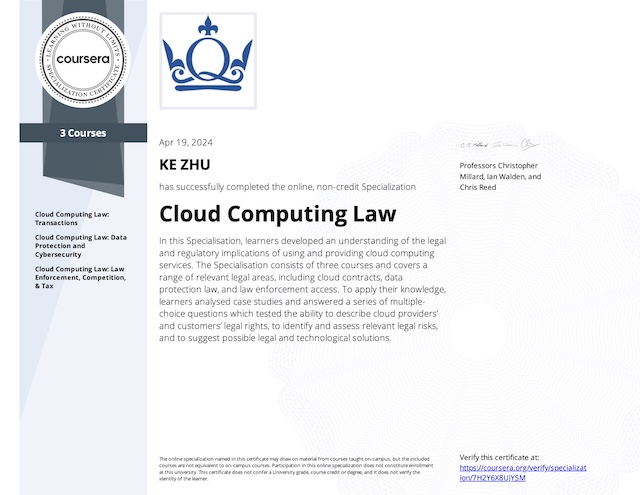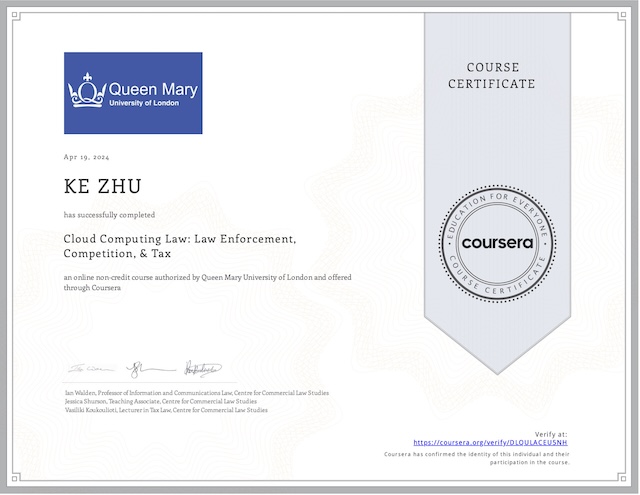Requirements Contracts & Output Contracts
A requirements contract is a form of contract where a seller agrees to supply all of a purchaser’s requirements in exchange for a promise that the purchaser will buy exclusively from that seller.
An output contract is, in a sense, the reverse situation. A buyer agrees to purchase all of the supplier’s product in exchange for the supplier’s promise not to sell to anyone else.
In order for requirements and output contracts (indeed, for other contracts) to be valid, the contracts must be mutual, and must bind both parties. Neither party can have a freeway out of the contract. Both must be making actual commitments that might be breached. The consideration for each other’s promise must be something that if it’s not given, would give rise to a breach of contract action.
Under the Uniform Commercial Code, the purchaser in the requirements contract has a duty to also make reasonable efforts to generate sales.
“A term which measures the quantity by the output of the seller or the requirements of the buyer means such actual output or requirements as may occur in good faith, except that no quantity unreasonably disproportionate to any stated estimate may be tendered or demanded.”
Section 2-306, UCC
Exclusive Dealing Contracts & Implied Promises
Wood vs. Lucy, Lady Duff-Gordon is an incredibly famous case about exclusive dealing contracts, from which the implied promises were used as consideration.
Even if her promise were not explicit, yet the whole writing may be instinct with an obligation, imperfectly expressed.
Cardozo’s opinion
Cardozo found this was the case in the agreement between Wood (plaintiff) and Lady Duff-Gordon (defendant). There was an imperfectly expressed or implied promise by Wood to “use reasonable efforts to place the defendant’s endorsements and market her design.” The fact that, the right the defendant granted was exclusively combined with the terms of compensation set forth in the agreement, was extremely important.
The implied promise to use reasonable efforts to bring profits and revenues into existence, constituted consideration that created an enforceable agreement and allowed the plaintiff to recover from Lady Duff-Gordon’s breach. The holding of this case has essentially been codified as the default rule for exclusive dealing contracts in the Uniform Commercial Code.
A lawful agreement by either the seller or the buyer for exclusive dealing the kind of goods concerned, imposes unless otherwise agreed an obligation by the seller to use best efforts to supply the goods and by the buyer to use best efforts to promote their sale.
Section 2-306(2), UCC
Also the official comment to this section says: “… parties to such contracts are held to have impliedly (even when not expressly) bound themselves to use reasonable diligence, as well as good faith in their performance of the contract. The exclusive agent is required, although no express commitment has been made, to use reasonable efforts and due diligence in the expansion of the market or the promotion of the product.”
Implied Promises vs. Unconscionability
Both exclusive dealing contracts and unconscionable contracts appear one-sided, but:
| Unconscionable contracts | Present mutual obligations that courts decline to enforce, because they were forged through an unfair procedure that led to unfair results. |
| Exclusive dealing contracts | When appearing to lack mutuality, but the court rendered the contract less one-sided and enforceable by reading into it and implied obligation of reasonable effort. |
In the case of Wood vs. Lucy, Lady Duff-Gordon, Cardozo apparently felt that the one-sidedness was not a product of procedural defect but merely, an imperfect expression of the actual exchange promises. The courts have two starkly different ways of responding to one sidedness:
- Either by refusing to enforce them because of unconscionability.
- Or by making them less one-sided by finding implied return promises as consideration.
Implied-in-Fact Contracts
An implied-in-fact contract is a contract where the parties agreement is inferred from their conduct rather than by explicit words. An implied-in-fact contract has the same legal effect as an express contract. The main difference is that the people use words in an express contract, while an implied-in-fact contract people manifest their mutual assent by their actions and their words.
For an implied-in-fact contract to exist two conditions must be satisfied:
- There must be one mutual agreement.
- There must be an intent to promise.
It’s socially valuable to promote mutual assent. If we have mutual assent, we have a revealed preference argument and inference that the contract is increasing the welfare of each of the parties. Without mutual assent, it’s unclear whether value is created. People will be forced into contracts that they did not want to enter. Allowing for implied-in-fact contract seems to make a lot of sense. Life would be a lot more inconvenient if say, you had to sign a contract every time you went into a restaurant.
Implied-in-Law (Quasi) Contracts
Quasi-contracts are not true contracts. They are obligations imposed by the law in cases where contract should have existed, where promises should have been made, but no actual or implied promises actually happened.
The main goal of quasi-contract as a separate cause of action is to remedy the possibility of unjust enrichment. Namely, one party getting a significant benefit without having to pay for it, which leads to an inequitable result. Quasi-contracts are also known as implied-in-law contracts, constructive contracts, sometimes referred to as unjust enrichment causes of actions.
For a quasi-contract to exist, the court states that there are three conditions which must be satisfied:
- There must be a benefit conferred upon the defendant by the plaintiff, AND
- The defendant must appreciate (feel) the benefit.
- Acceptance and retention by defendant of such benefit under such circumstances, it would be inequitable for the defendant to retain the benefit without making a payment to the plaintiff.
Would’ve and Couldn’t Have
Alternative conditions have also been proposed for thinking about what is a quasi-contract. Quasi-contract liability is more likely to lie if the plaintiff can show that:
- the defendant would have been willing to contract to pay for the benefit that was conferred on the defendant,
- but that the defendant couldn’t have entered into an express or implied-in-fact contract.
The classic example of quasi-contract liability concerns the pedestrian, who is hit by a car and is lying unconscious in the street. A passerby provides medical assistance, saves the pedestrian’s life, and then sues for quasi-contractual damages. The would’ve/couldn’t have elements are clearly present. The pedestrian would have been willing to contract to pay for his life being saved, but the passerby has a pretty good excuse for not securing an explicit agreement since the pedestrian was passed out at the time that this benefit was conferred.
Moral Obligation and Consideration
A promise given in return for past good deed creates a moral obligation for the promisor. As a matter of traditional contract law, past consideration is no consideration.
The Traditional Rule
At least in 1825, according to the court, a mere moral obligation combined with a promise is not sufficient to be a consideration to enforce the promise, even when refusal to perform such a promise may be disgraceful. The court acknowledged that moral obligation and a promise are sometimes sufficient to qualify as consideration, but only if there was a preexisting legal obligation at some time in the past. Absence a pre-existing legal obligation however, the law leaves moral obligations to the conscience of the promisor.
The Modern Rule
110 years later, in a case in 1935 the court held that the defendant’s moral obligation sufficient consideration to bind him contractually. The court articulates an exception to the past consideration is no consideration rule, and holds a moral obligation is a sufficient consideration to support a subsequent promise, because the promisor has received a material benefit, although there was no original duty or liability resting on the promisor. In other words,
material benefit + moral consideration + subsequent promise
= sufficient consideration” (1) A promise made in recognition of a benefit previously received by the promisor from the promisee is binding to the extent necessary to prevent injustice.”
“(2) A promise is not binding under the first subsection (1), (a) if the promisee conferred the benefit as a gift or for other reasons the promisor has not been unjustly enriched, or (b) to the extent that its value is disproportionate to the benefit.”
Section 86 of the Restatement
In some ways, the modern rule can be seen as allowing recovery when there is moral past consideration. When the beneficiary has gone further and given the court with his or her promise a specific price at which to value the benefit. It’s as if moral consideration is quasi-contract plus an explicit promise.
Promissory Estoppel
In the well-known case Allegheny College vs. National Chautauqua County Bank of Jamestown, even though Justice Cardozo did not use the doctrine of promissory estoppel, he spent a significant portion of his decision discussing the doctrine which he sees as a new direction in which contract laws involving. Promissory estoppel is “a substitute for consideration or an exception to its ordinary requirements.”
Cardozo notes that judges in New York have adopted the doctrine of promissory estoppel as the equivalent of consideration in connection with our law of charitable subscription. In doing so, the judges have been influenced by conceptions of public policy. They believe that charitable organizations do important and beneficial work that would not be possible without an ability to rely on promised donations. Organizations need to be able to plan for the future.
Today promissory estoppel in New York is no longer restricted only to context such as charitable subscriptions. But it does have some additional elements, not required in section 90 of the Restatement of Contracts. In New York, the promise must be clear and unambiguous. And the reliance must be foreseeable to the promisor and reasonable by the promisee and the resulting injury must be unconscionable.
Statute of Frauds
Statute of Frauds concerns the kinds of agreements that must be in writing in order to be enforceable. If an agreement falls within the statute, then having a written contract is a requirement for enforcing the promises in the agreement.
In 1677, the English Parliament passed the precursor to the modern American Statute of Frauds. It was called an Act for Prevention of Frauds and Perjuries. The Act was meant to prevent individuals from falsely claiming that another party had promised them something, and from then, suing that party for breach of the alleged contract. Section 4 of the Act requires the contracts must be in writing for certain types of actions, these included:
- suing one for agreeing and failing to pay another’s debts
- suing for violation of agreements made on consideration of marriage
- suing on agreements for the sale of land
- and suing on agreements that could not be performed within a year
Section four of the Act has been widely imitated since then.
The Statute of Frauds was meant to address false allegations that an agreement existed. But in addressing that problem, It might encourage the converse concern, alleging no agreement existed when in fact an agreement did. Without the Statute of Frauds, we’re up to see false allegations of contract when the parties never infact agreed. But with the Statute of Frauds, we’re up to see false denials of contracts, where the parties actually did agree.
The Statute of Frauds requires not only that contracts be in writing, but also that they be signed. “The word signed includes any authentication which identifies the party to be charged.” As UCC and the Restatement suggests, courts have taken a broad view of what counts as a signature.
My Certificate
For more on Contract Law: Consideration and Its Substitutes, please refer to the wonderful course here https://www.coursera.org/learn/contracts-1
Related Quick Recap
I am Kesler Zhu, thank you for visiting my website. Check out more course reviews at https://KZHU.ai



